We continue along the Cotswold escarpment, taking in woodlands, hill forts and views, passing a Roman villa and the place that people throw themselves off in pursuit of a round of Double Gloucester Cheese. Yes, really!
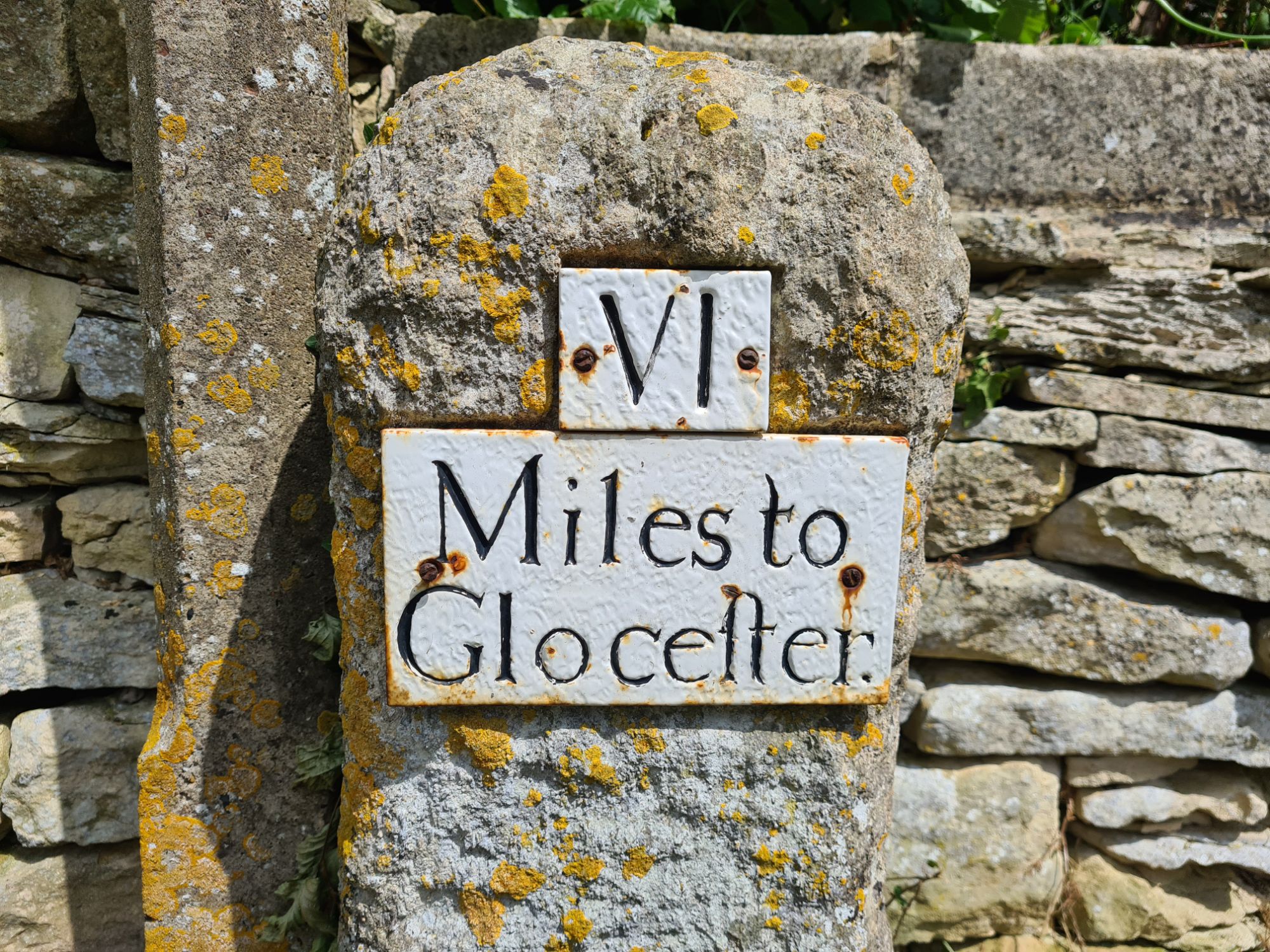
Day Five: Birdlip to Painswick. 7 miles/11.5km
It was a fairly typical large hotel breakfast. Attentive staff and a wide buffet choice. As it was a short day we had treated ourselves to a lie in, were probably the last of the trail walkers down to the restaurant and almost the last to leave, back on trail.
This day is consistently good and almost the same for the entire section until nearing Painswick- following the escarpment, ups and downs, many quite steep, interspersed with delightful easy walking. For the first couple of miles it was often slow going. A farmer had been using the wide ride to access his field further along and his tractor had torn up an already muddy track. Beyond that, it was fine. The sun shone down through the beech slopes, shafts of light, ferns bracketed the trail, moss covered the ancient crumbling dry stone walls, birdsong, rattling of woodpeckers, the shuffle of trail shoes through beechmast, heavy laboured breathing on the steeper sections, chatter between the two of us, it was a joy to be here.
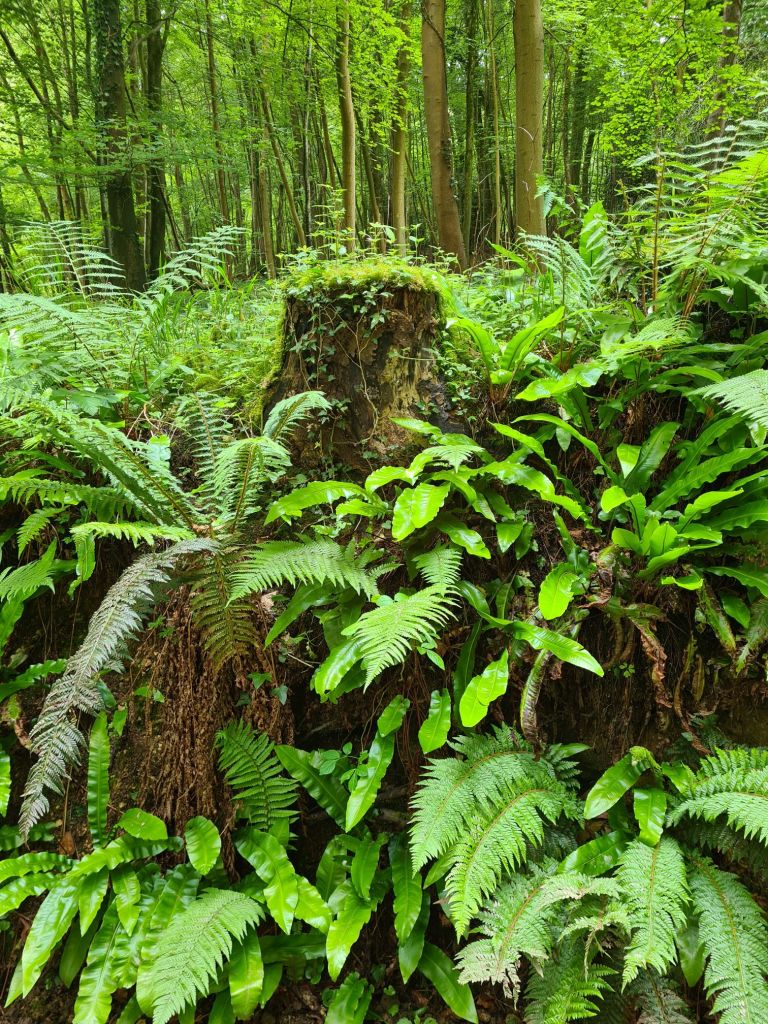
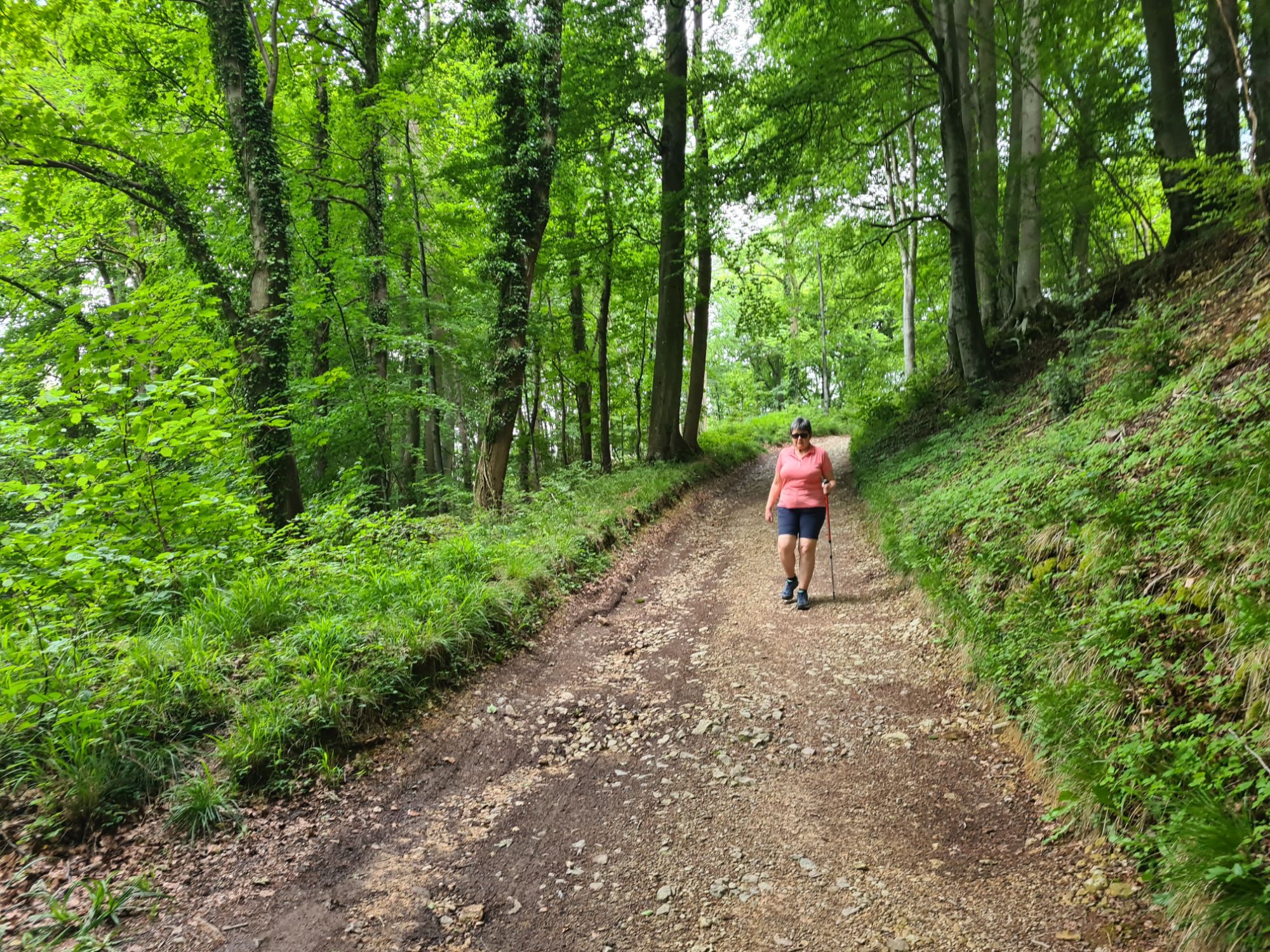

Walkers on this section pass the Witcombe Roman Villa, one of the largest Roman houses in Britain. We reached the junction on the trail, a finger post points off downhill to the villa, apparently 1/4 mile off trail, downhill. Nonsense, it is an easy five minute wander. How many other walkers today bothered to go to see what was hidden amongst the uncut grass in a small field? Few, I am sure.
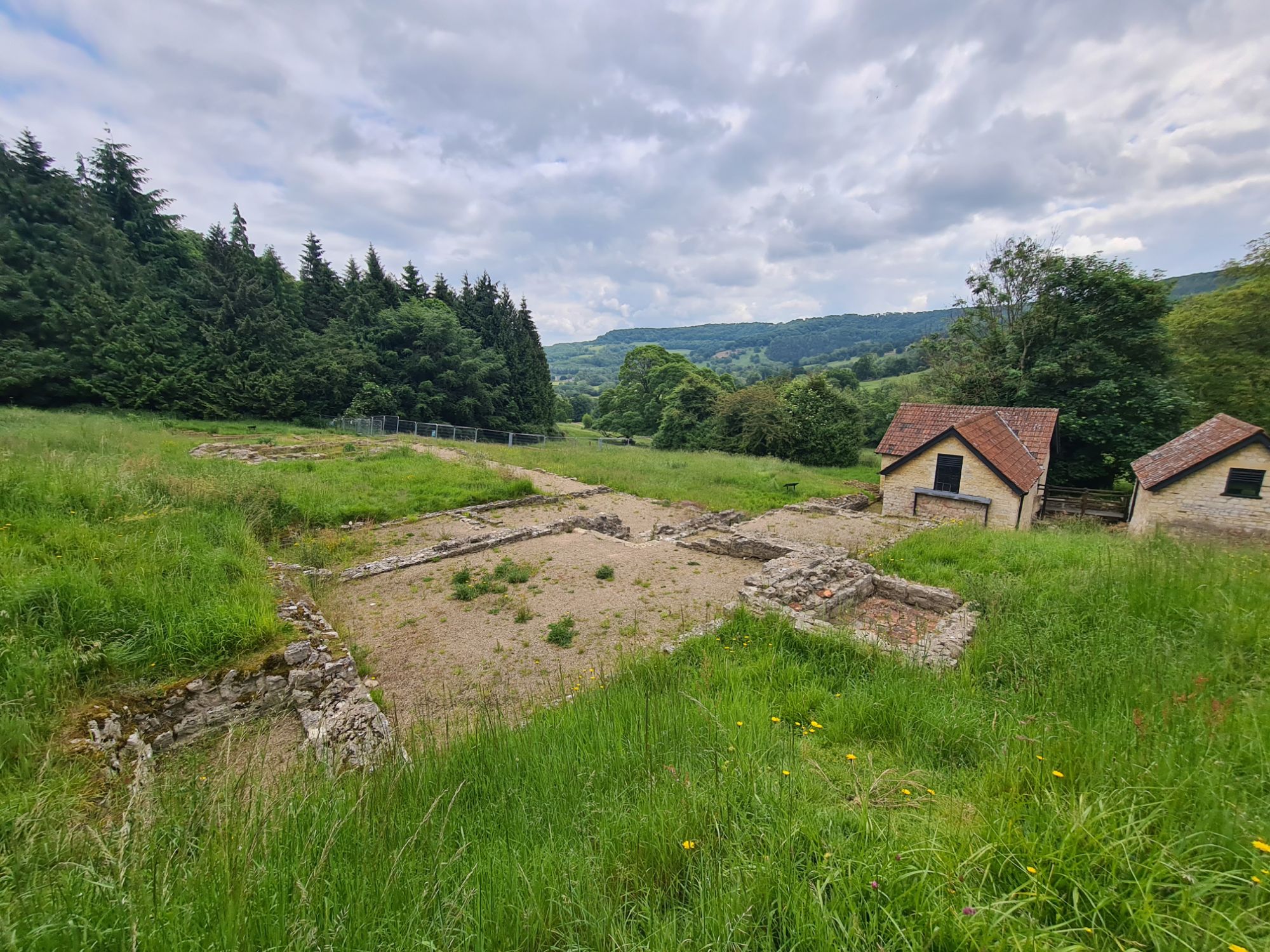
It was built sometime between the mid-2nd and mid-3rd centuries AD. on the spring line and discovered by farm workers in 1818. It’s position at the nearby spring is responsible for the lower bath houses, later excavated along with apparently fine mosaics however I couldn’t see those as they are inside locked and windowless modern buildings. The remainder of the site has also been closed. A rope across the path bars the obedient from entering the site close enough to see anything of interest. I chatted to a lady walking her two scotties amongst the ruins and she told me the site had been closed for some time, with little indication if and when it might open. It is easy to see what has happened. Money, or lack of, has made decision. Few visitors will visit this little but remarkable survivor, so rather than spend money on both decent interpretation, site maintenance and on-site staff, the health and safety card has been played and it is cheaper to close it off entirely. The mindset seems to be hang our heritage and ignore commitment to access. Those responsible should be sacked.

The trail walks along the bottom of Cooper’s Hill, loops round and labour’s up to the top. I was a little surprised at how small the exposed hill is, hemmed in by trees. This is the location of that most eccentric of annual festivals, the cheese rolling. Each year, in defiance of official disapproval, thousands somehow squeeze in and around here to watch the foolhardy hurtle down the stupidly steep concave slope in pursuit of a mock cheese.
It is no smooth hill, pockmarked by deep indentations. The event, more a tradition, is as much as six hundred years old. Those who avoid a broken neck and are successful in winning the ‘cheese’, take home a real 7lb (3kg) round of Double Gloucester cheese. Though, of course, it is not the prize, it is the taking part. The 2024 event had taken place a week before we left home to start this trail. Proving that this is now an international affair, the winner of the first men’s race was German, the second men’s race Australian and the women’s race winner was from the US. There was some home-grown success with a Gloucester man winning the third and final men’s race for the second time. In a previous year, the winning female had only discovered her victory when she regained consciousness in hospital.


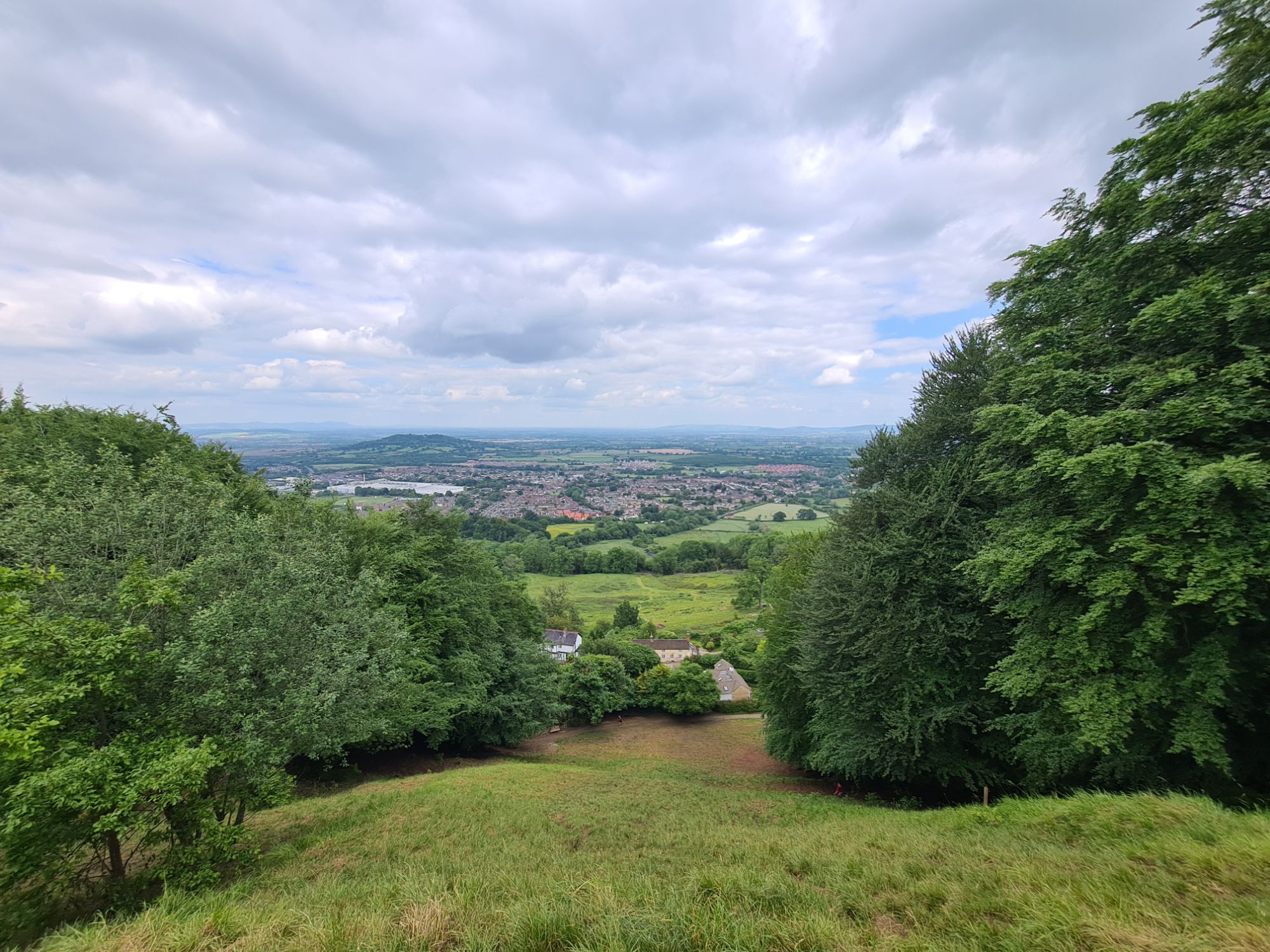
Nearing the end of this section we passed alongside and through the drawn out links of the ancient Painswick Golf Club. This is another part of the trail where a slight diversion benefits the curious, as the trig point provides a good view over the clear remains of the hill fort that have been integrated into the golf course. There are two ramparts and two clear ditches surrounding the upper part of the fort and golfers seem to play some very oddly laid out holes on this part of the course.
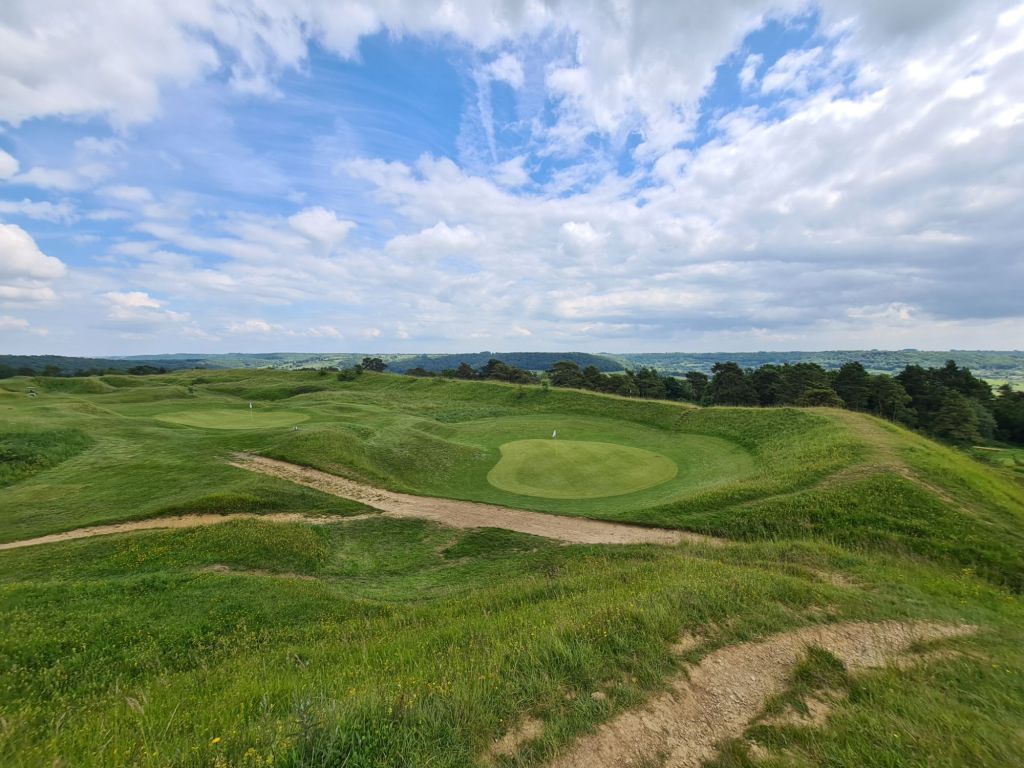

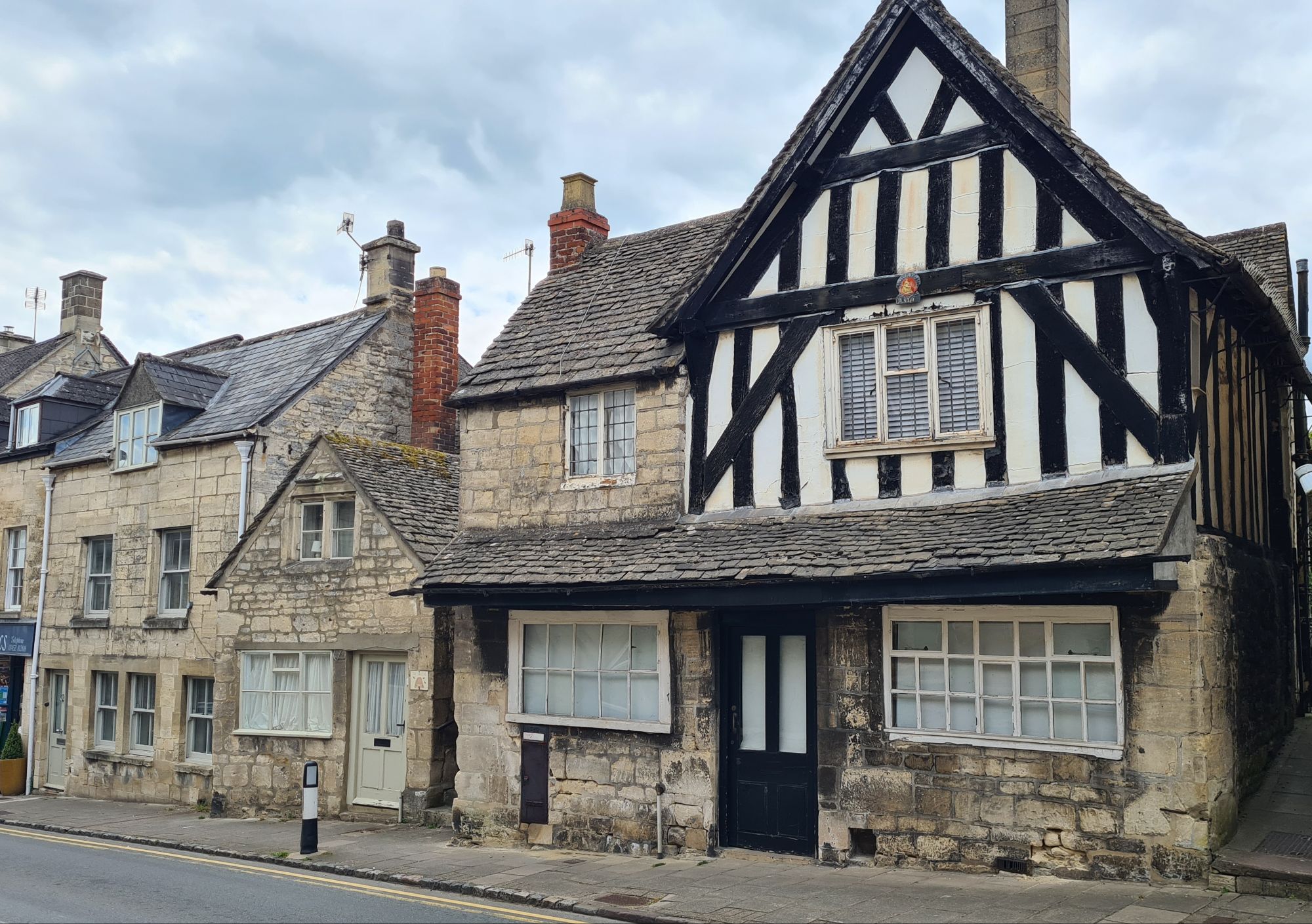
After passing through so many villages built of the gorgeous honey-coloured local stone, the old market town of Painswick, ‘the Queen of the Cotswolds’, was a bit of a surprise as many of the buildings in this former cloth trading town are made from a light grey coloured stone. The Cotswold rock that so many buildings and walls are built from is mainly an oolitic limestone, sediments slowly, ever so slowly, formed during the Jurassic era. The deep honey-coloured stone is most prevalent in the north of the Cotswolds, getting paler the further south. We had noticed that the Royal George, last night’s overnighter, was similarly constructed from this paler stone. Though the image of the old post office on a 1997 Royal Mail stamp seems to have been altered to show the more honeyed colour.
Wool was exported from the district in huge quantities. By 1360 England was annually exporting over 32 000 wool sacks, much of it coming from the local breed, the ‘Cotswold Lion’ so called because of its mane like fleece. The town entered its most prosperous period in the 17th and 18th century when the stream below the town was used to power the wool mills. Many merchants made their fortune from the industry and had fine houses built here as a result. The trade eventually faltered, probably moving north as coal was used to power the new mills built there. Painswick has a ‘wool church’ symptomatic of the money in the town. We had arrived in town early enough to not only go for pints, peanuts and chat in The Oak, but on leaving, also explore St Mary’s, dating from 1377. The churchyard has 99 sculpted yew trees, first planted in the 18th century. Only 99, the Devil ensures a 100th will never grow. There is also a large number of 17th and 18th century table tombs in it’s churchyard, many carved by the local mason Joseph Bryan and his two sons. I chatted to the Church Warden for long enough for Mrs TPOTC to grow impatient. A shower and afternoon rest in our overnight accommodation beckoned.



Tonight’s accommodation is a B&B in Painswick. A claim to fame is being winner on C4’s ‘Four in a Bed’. It doesn’t provide evening meals so we had been uncertain where we would be eating. As it was, we chose to return to The Oak in the evening for decent Haddock and Chips. Yet another good day, and not a whisper of rain.
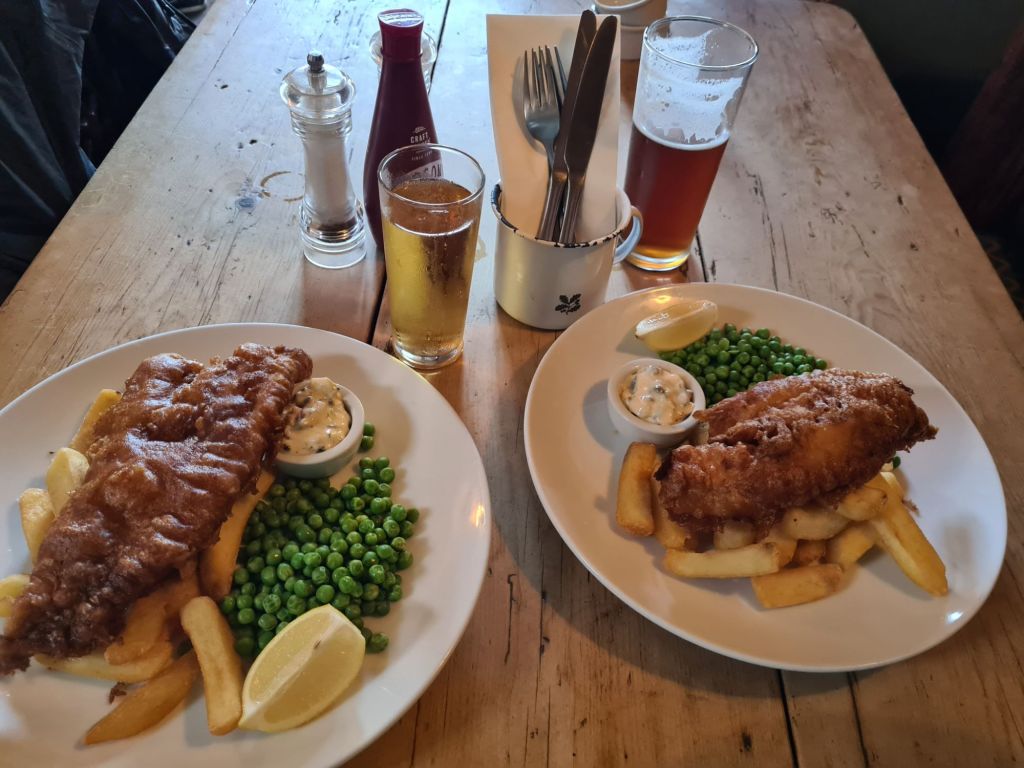
- Cotswold Way- National Trail
- Cotswold Way: Chipping Campden to Stanton
- Cotswold Way: Stanton to Winchcombe
- Cotswold Way: Winchcombe to Dowdeswell
- Cotswold Way: Dowdeswell to Birdlip
- Cotswold Way: Painswick to King’s Stanley
- Cotswold Way: King’s Stanley to Dursley
- Cotswold Way: Dursley to Wotton-under-Edge
- Cotswold Way: Wotton-under-Edge to Old Sodbury
- Cotswold Way: Old Sodbury to Cold Ashton (Pennsylvania)
- Cotswold Way: Cold Ashton to Bath

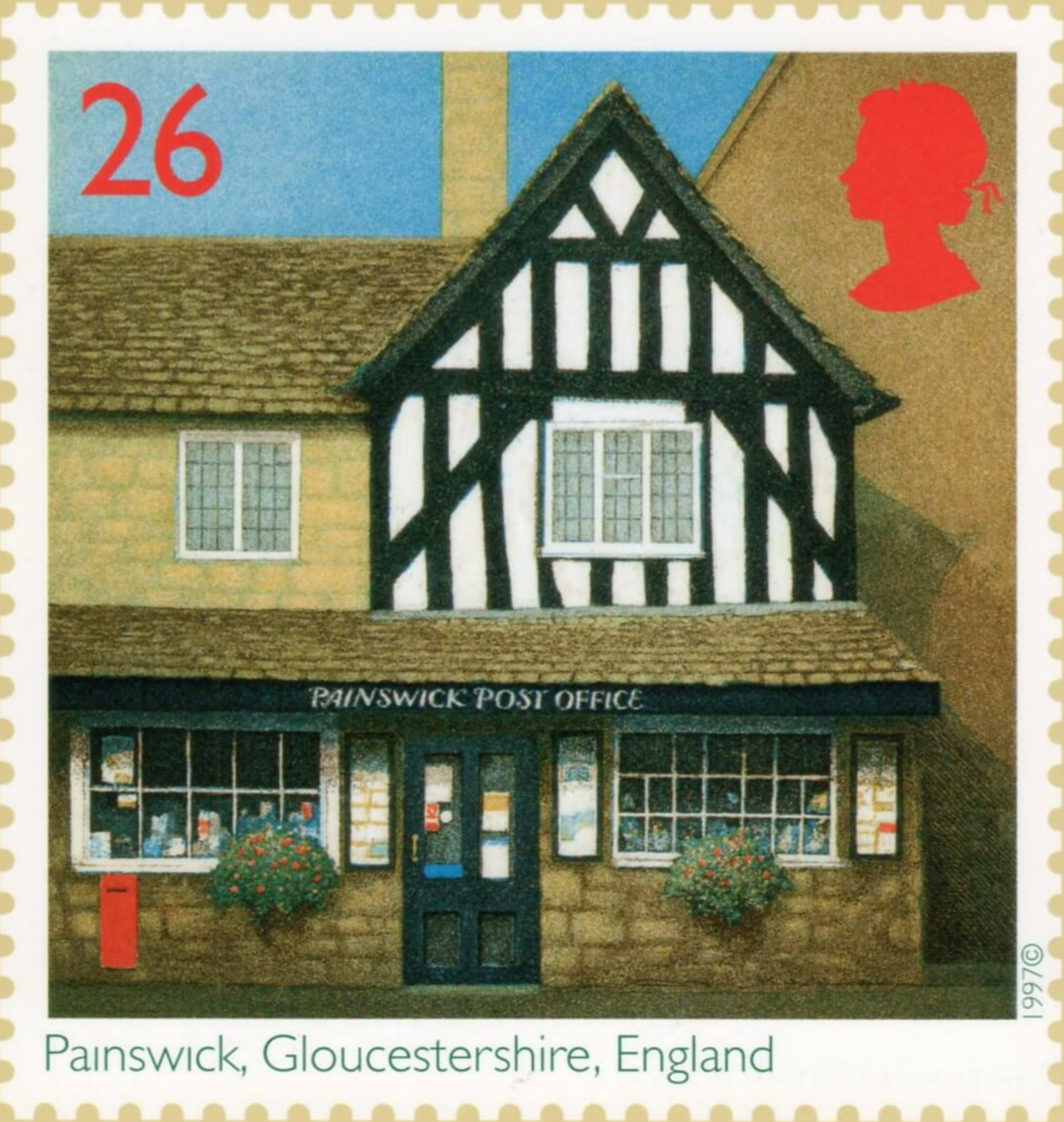
Please stop sending these emails. I cannot unsubscribe and wish to.
Thank you
LikeLike
no problem. Thanks for letting me know. I have unsubscribed you so you shouldn’t be troubled any more, best
LikeLike